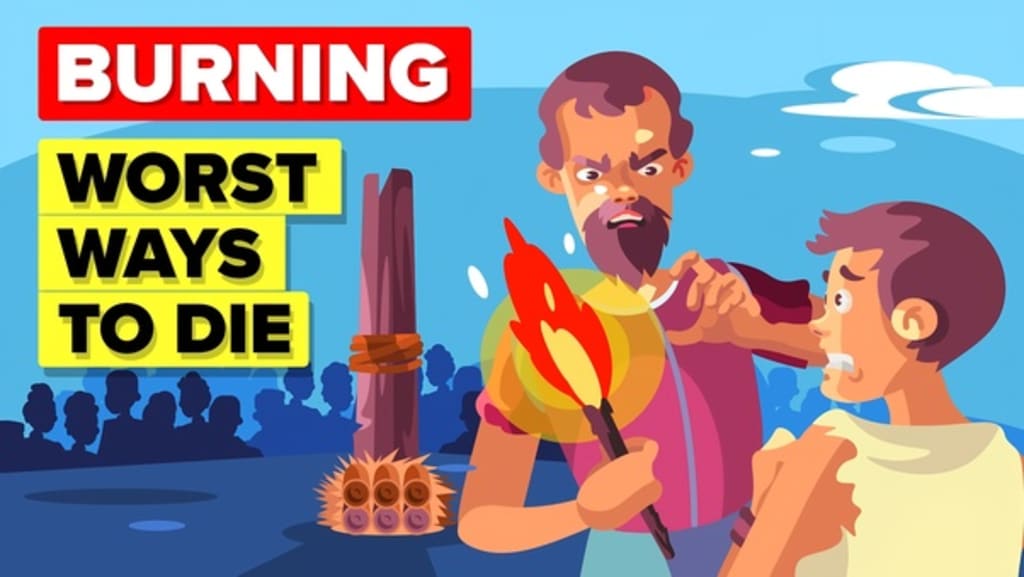Content warning
This story may contain sensitive material or discuss topics that some readers may find distressing. Reader discretion is advised. The views and opinions expressed in this story are those of the author and do not necessarily reflect the official policy or position of Vocal.
Why is being burned alive considered one of the worst ways to die?
If you've ever experienced the excruciating pain of third-degree burns, you can imagine the agony of being engulfed in flames. In this narrative, we'll explore why burning alive is considered one of the worst ways to die. 💀😭🔥

If you've ever experienced the excruciating pain of third-degree burns, you can imagine the agony of being engulfed in flames. In this narrative, we'll explore why burning alive is considered one of the worst ways to die. 💀😭🔥
Thank you so much for viewing our narrative today! We would love to hear your thoughts and feedback in the comment section below.
And don’t forget to subscribe to us for new narratives, probably every day. We appreciate your support and interest. Have a wonderful day! 😊
About the Creator
Enjoyed the story? Support the Creator.
Subscribe for free to receive all their stories in your feed. You could also pledge your support or give them a one-off tip, letting them know you appreciate their work.
Reader insights
Outstanding
Excellent work. Looking forward to reading more!
Top insights
Easy to read and follow
Well-structured & engaging content
Expert insights and opinions
Arguments were carefully researched and presented
On-point and relevant
Writing reflected the title & theme






Comments
There are no comments for this story
Be the first to respond and start the conversation.